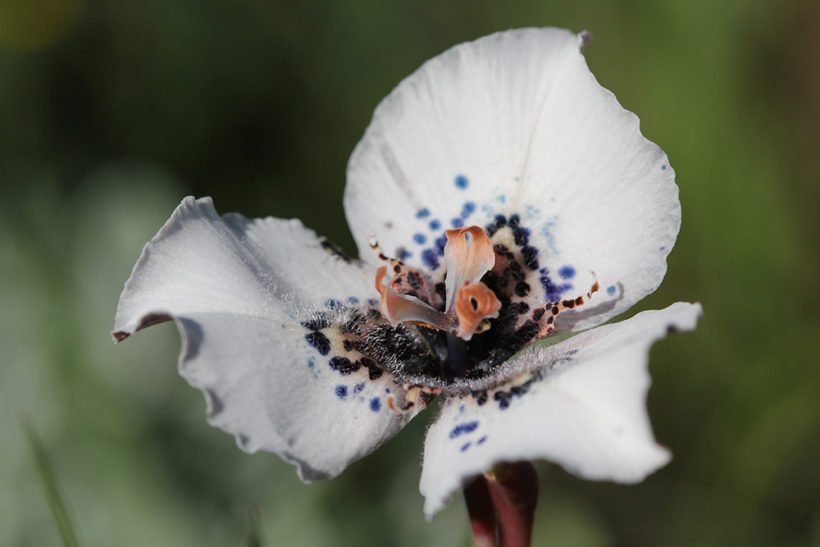The genus Moraea forms part of the Iridaceae family and was first described by Philip Miller in 1758. There are a total of 195 species of Moraea, 123 of which occur in South Africa’s Cape Floristic Region. The range of the genus extends from here northwards through Sub Saharan Africa with two species occurring in Eurasia. Moraeas have a diversity of different pollinators. Many are pollinated by different species of long-tongued flies. Some are pollinated by monkey beetles whereas those with prominently displayed anthers are pollinated by bees.
Renosterveld vegetation is known for its diversity of geophytes and in the Overberg genus Moraea is well represented. Sadly, owing to habitat loss many Moraea species here are at the brink of extinction. These are just some of the threatened Moraeas of the Overberg’s beautiful Renosterveld. The Overberg Renosterveld Conservation Trust is working hard to conserve the Renosterveld habitats that are home to these and many other beautiful and threatened species. Consider a donation to support their work.
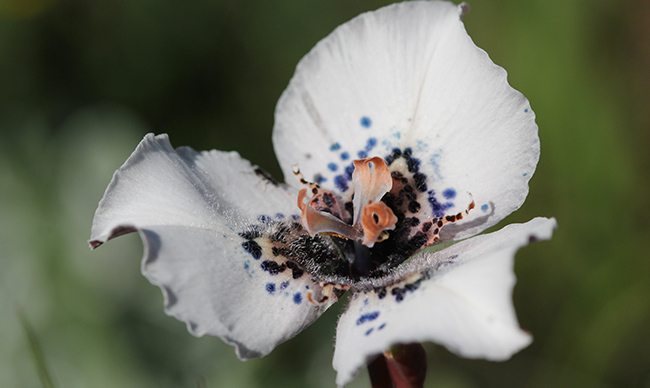
Moraea atropunctata is known from just one population in Western Rûens Shale Renosterveld, where it is fiercely protected by a very caring farmer. Its former range was thought to have been larger, but it is now restricted to the edge of farm tracks and the margins of ploughed fields where the soil is too rocky to be suitable for cultivation. It is therefore considered Critically Endangered on the Red List of South African Plants. Flowering time is mid-August to September.
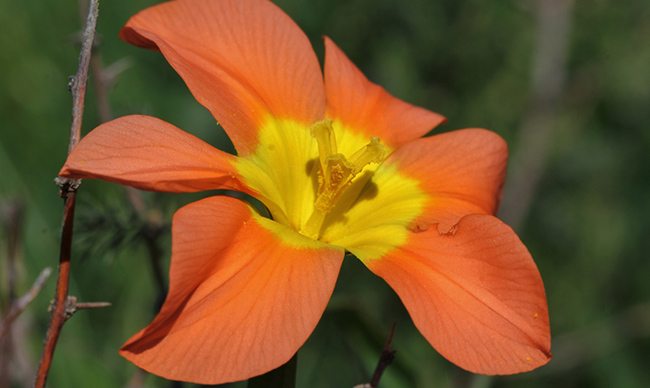
Moraea comptonii has lost more than 80% of its former habitat owing to transformation for cereal agriculture over the last 70 years and habitat loss is ongoing. This species is now restricted to just five localities in Western Rûens Shale Renosterveld fragments where it is also threatened by alien vegetation invasion. It is therefore considered Endangered on the Red List of South African Plants. Moraea comptonii flowers from August to September.
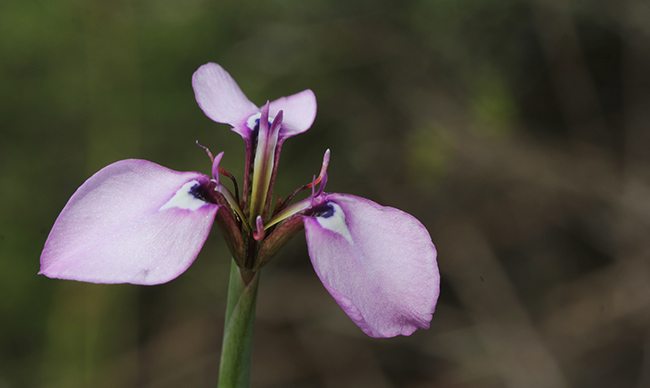
This delicate small purple Moraea is uncommon in the Overberg. Its species epithet ‘debilis’ means ‘slender’ in Latin, referring to the delicate habit of the plant. It comes into flower late during spring, flowering from September often well into October after most other Renosterveld spring flowers have finished their beautiful displays. This species was collected by several early botanists in the Cape, including Carl Pappe and Rudolph Schlechter, although it was often mistaken for the similar looking Moraea tripetala. It has a highly fragmented range, from Botrivier to Swellendam in Western, Central and Eastern Rûens Shale Renosterveld on clay slopes. Moraea debilis is threatened by further habitat loss, livestock overgrazing and habitat degradation by edge effects such as herbicide spraying in small Renosterveld remnants. It is therefore considered Endangered on the Red List of South African Plants.
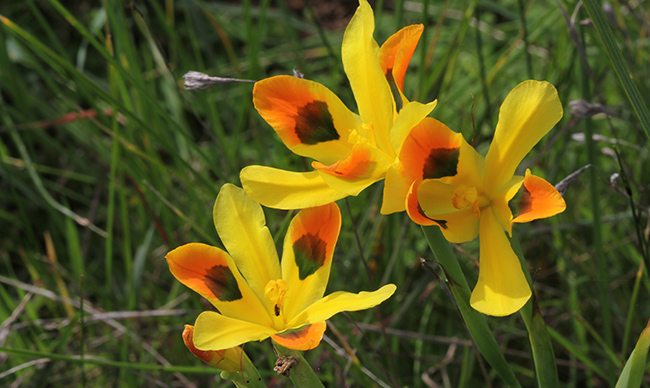
Moraea elegans is a Renosterveld specialist that occurs from Stellenbosch to Bredasdorp. Unfortunately, like many other Renosterveld species it is threatened in the wild due to habitat fragmentation and loss owing to ploughing for cultivation of crops such as wheat and canola. It is therefore considered Endangered on the Red List of South African plants. This species was originally named in Vienna in 1797 by the botanist Baron Nikolaus Joseph Jacquin. Moraea elegans is easy to grow and widely available in cultivation. It flowers from August to September.
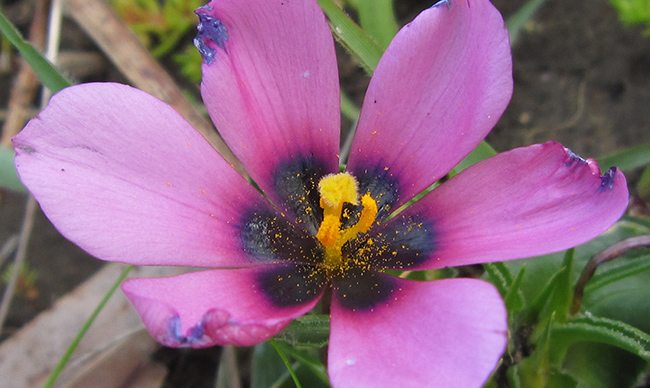
Moraea melanops is restricted to a handful of localities due to habitat loss from transformation for agriculture in Western and Central Rûens Shale Renosterveld. It is therefore considered Endangered on the Red List of South African Plants. This species flowers from August to September.
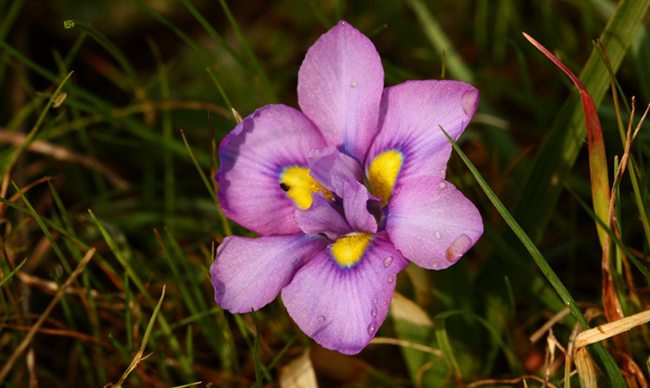
Moraea tricolor was formerly widespread with its original range being from the Cape Flats (where it is now extinct) northwards to Citrusdal in the Cederberg Mountains and eastwards to Stillbaai. It grows on sandy or clay flats in seasonally moist depressions. There are now between just six and twelve subpopulations remaining owing to habitat loss from urbanisation, transformation for agriculture and alien plant invasion. It is therefore Endangered on the Red List of South African Plants. Moraea tricolor flowers from July to September.
References and Further Reading
Goldblatt, P (1986) The Moraeas of Southern Africa, Annals of Kirstenbosch Botanic Gardens 14, National Botanic Gardens, Cape Town.
Manning, J. Goldblatt, P and Snijman, D (2002) The Colour Encyclopaedia of Cape Bulbs, Timber Press, Portland.
Raimondo, D. von Staden, L. Foden, W. Victor, J.E. Helme, N.A. Turner, R.C. Kamundi, D.A and Manyama, P.A (2009) Red List of South African Plants, Strelitzia 25, South African National Biodiversity Institute, Pretoria.

